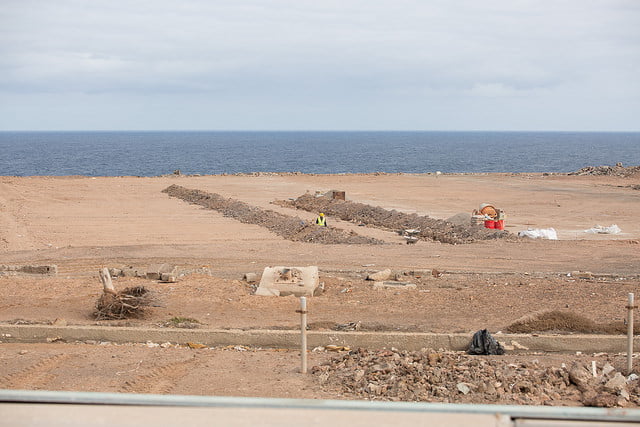 The largest photovoltaic facility to have been built on Gran Canaria will be operational by March of 2018 say the Cabildo, and will prevent more than 320 tons of CO2 from being discharged into the atmosphere. In addition, it is the first publicly owned solar plant to be built on the island, as it is the result of a collaboration between the Cabildo de Gran Canaria, the Commonwealth of the North and the Town Council of Gáldar.
The largest photovoltaic facility to have been built on Gran Canaria will be operational by March of 2018 say the Cabildo, and will prevent more than 320 tons of CO2 from being discharged into the atmosphere. In addition, it is the first publicly owned solar plant to be built on the island, as it is the result of a collaboration between the Cabildo de Gran Canaria, the Commonwealth of the North and the Town Council of Gáldar.
The project has a budget of €770,000 contributed by the Cabildo through its [commonwealth] Cooperation Plan with the Mancomunidades, in this case the Mancomunidad del Norte, whose ten mayors agreed unanimously to back this important environmental project to construct in partnership with the municipal council of Gáldar, a 10,000 square meter ‘Parque Tecnológico del Norte‘, of which 5,000 square meters will be occupied by this installation.
 The energy produced will be fed into the main island network and will generate an estimated income of €70,000 annually for the Mancomunidad (Commonwealth), and research is also contemplated into various other types of power generation including a study of the park’s proximity to the sea.
The energy produced will be fed into the main island network and will generate an estimated income of €70,000 annually for the Mancomunidad (Commonwealth), and research is also contemplated into various other types of power generation including a study of the park’s proximity to the sea.
The president of the Cabildo, Antonio Morales, underlined together with Minister of Institutional Cooperation, Carmelo Ramírez, and Minister of Energy, Raúl García Brink, that the island government has launched its ‘Transforma Plan’, an ambitious road map of works, funded by an investment of €456 million that includes the €18 million annual Cooperation Plan with the Municipal Councils and, for the first time, with the Mancomunidades, which will receive €1 million per year.
 Last year the Commonwealth of the North allocated this amount to energy savings and efficiency projects, “probably the biggest revolution in terms of achieving lower consumption and pollution,” Morales said, “and this year goes a step further and contributes to Cabildo’s aim for an eco-island in which renewable energies play a fundamental role, and also sets an example to other institutions. ”
Last year the Commonwealth of the North allocated this amount to energy savings and efficiency projects, “probably the biggest revolution in terms of achieving lower consumption and pollution,” Morales said, “and this year goes a step further and contributes to Cabildo’s aim for an eco-island in which renewable energies play a fundamental role, and also sets an example to other institutions. ”
Morales emphasised that, in addition to generating clean power and contributing to the fight against climate change, this is a highly competitive energy source, as solar power costs about €80 per megawatt hour compared to the €200 it costs to produce electricity from petroleum, so much so that countries like Germany and the United Kingdom, with many hours less of solar radiation, have strongly opted for this option in recent years.
The president of the Mancomunidad del Norte, Pedro Rodríguez, described the start of the works as “magnificent news” for the environment and for the economic benefits, because the €70,000 a year saving will revert directly back to the north of the island.
The plant will have 1,674 photovoltaic modules with a power of 452 kilowatts, although it has the capacity to grow up to 1,850 modules and provide 500 kilowatts of power.
All in all they expect to initially generate enough electricity equivalent to powering 150 homes.














